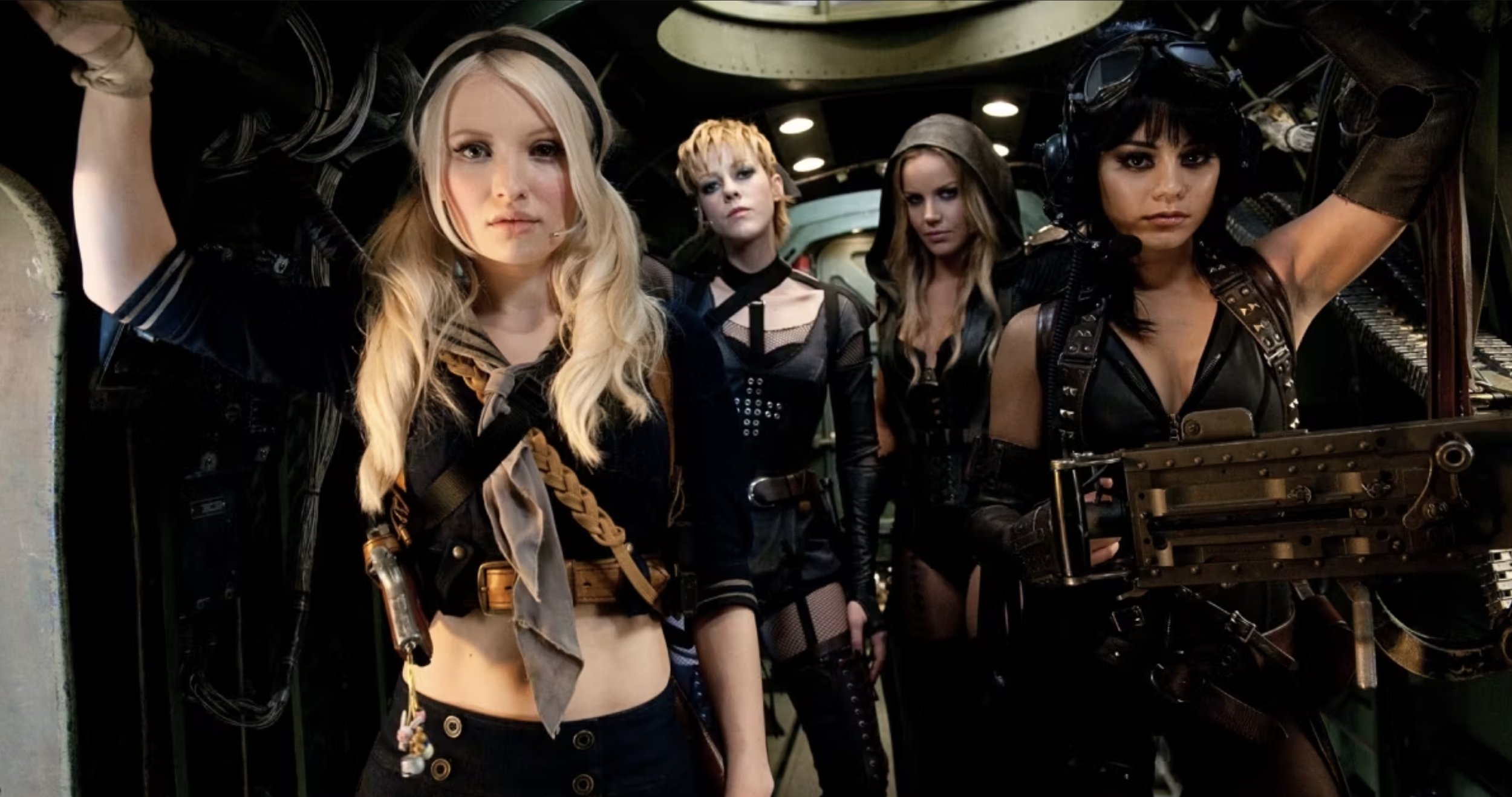Sucker Punch (2011), directed by Zack Snyder, is a visually bold action-fantasy drama that blurs the line between reality and imagination. The story follows Babydoll, a young woman committed to a mental institution by her stepfather. There, she befriends a group of fellow inmates—Sweet Pea, Rocket, Blondie, and Amber. In an effort to escape her grim surroundings and reclaim control of her life, Babydoll retreats into a multi-layered fantasy world that she shares with her companions.
The film builds its narrative around these levels of fantasy: the grim asylum forms the first layer, but deeper escape lies in elaborate imaginations. Babydoll imagines herself as a burlesque dancer—a role that empowers her with control and agency. Beyond that, she envisions elaborate, stylized action sequences in which she and her friends transform into elite warriors fighting impossible battles—against samurai, World War I-era tanks, dragons, and other surreal foes. Each victory in these fantasy missions is meant to symbolize Babydoll gaining the necessary clues or tools to find freedom in reality.
Visually, Sucker Punch is a spectacle. Snyder layers heavily stylized CGI, saturated colors, and rhythmic editing to create high-energy action scenes that feel like animated dreamscapes. The contrast between the drab, oppressive reality of the asylum and the hyper-stylized fantasy world creates a striking dichotomy. Every mission sequence is paired with a cover version of a modern rock or pop song, lending each action set-piece an intense, almost music-video aesthetic.
Critically, the film received mixed reactions. Many praised Snyder’s ambition and the exhilarating visuals, while others took issue with the lack of character depth and narrative coherence. Babydoll herself is often criticized as an archetype rather than a fully realized character—an avatar for spectacle rather than emotional resonance. Despite this, fans of Snyder’s stylized direction and action choreography appreciate the film as a visual treat.

What sets Sucker Punch apart is its ambition to explore themes of agency, trauma, and self-liberation through genre blending. The fantasy world becomes a metaphor for mental escape and the search for empowerment in a disempowering reality. Yet the film’s commitment to style sometimes overshadows its characters and message. Its thematic message—that women can reclaim power even in oppressive circumstances—is compelling in theory, but sometimes feels muddled in execution.
Presented as a meditative metastory on trauma and resilience, Sucker Punch dares to ask how we survive our inner prisons. While it may sacrifice narrative nuance in favor of visual adrenaline, it remains a cinematic spectacle that leaves strong images—and strong debate—long after its final frame.


-1751708543-q80.webp)
-1752117562-q80.webp)